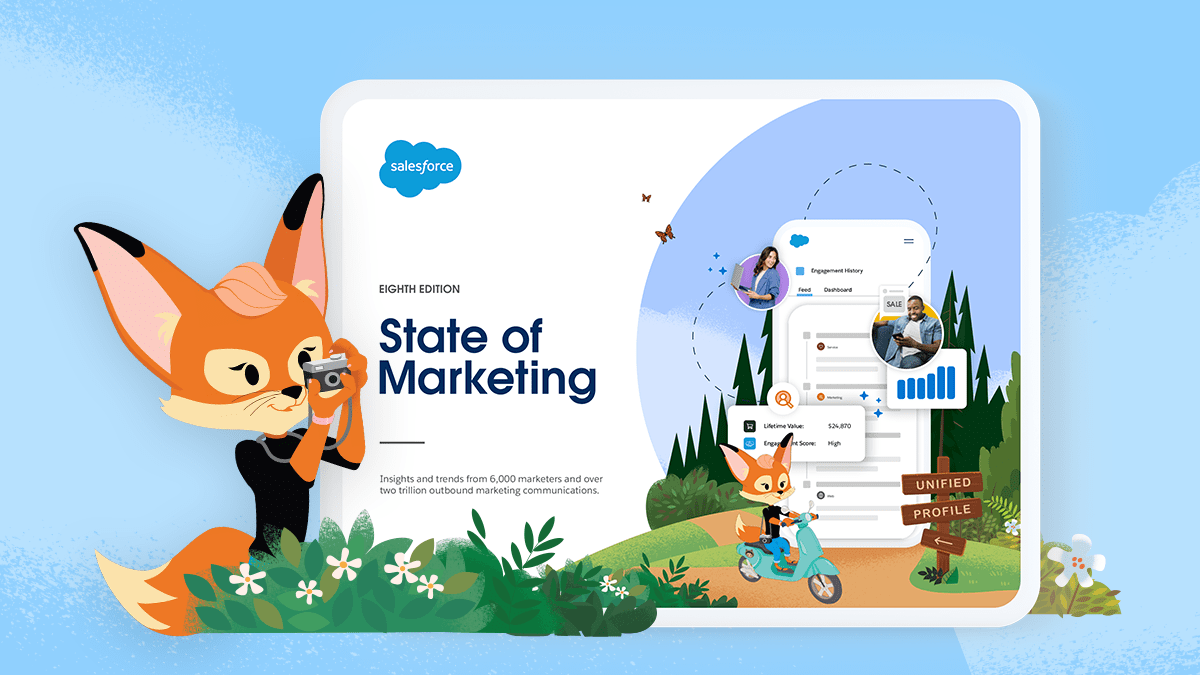What is Personalised Marketing?
Time to read: 5 minutes

Personalised marketing involves tailoring your marketing efforts by utilising the data gathered from your contacts, including their interests, shopping preferences, purchase history, and more.
When you leverage this data to customise the content that your contacts receive through various channels such as email, advertisements, and other platforms, you are actively engaging in personalised marketing.
Personalised marketing involves leveraging data to establish meaningful connections with target audiences and existing customers, resulting in an optimised marketing experience. By effectively collecting and utilising data, businesses can identify patterns that enable them to target potential customers more efficiently. These insights not only assist marketing strategists in pinpointing their desired audience but also aid in nurturing leads throughout the buyer's journey.
Moreover, personalised marketing strategies enable businesses to expand their reach without squandering resources on ineffective marketing methods that target the wrong audience.
However, personalised marketing encompasses more than simply inserting the customer's name into a generic marketing email. It entails delivering the right message to the right person at the right moment, accompanied by relevant suggestions.
By personalising your marketing, you ensure that your content carries a human touch while also having the potential to drive revenue. This is precisely why crafting unique marketing experiences for each customer is crucial.
The Benefits of Personalised Marketing
Enhanced customer experience:
Increased customer loyalty:
Improved return on marketing investment:
The Challenges of Personalised Marketing
Gathering data without inconveniencing customers:
To deliver a truly personalised experience, accurate data about your contacts is essential, typically stored in a CRM. However, collecting this data can be challenging. There are two primary channels for data gathering:
Analytics: Tracking people's behaviour through code on your website allows for non-intrusive data collection. However, some customers may feel uncomfortable seeing ads for recently viewed products.
Customer surveys and forms: These are more transparent methods, and many customers are more comfortable with them. However, they require time to fill out, and lengthy forms can deter participants from completing them.
Balancing transparency and convenience is crucial. Before implementing changes, consider how you would personally perceive them. Put yourself in the customer's shoes to ensure a positive experience.
Striking the right level of subtlety:
- While some consumers appreciate brands that cater to their interests, they dislike feeling overwhelmed. 77 % of consumers, from a 2018 survey, think they see too many retargeted ads. Finding the right balance is key. Clearly communicate the value of personalised content while avoiding aggressively targeted ads. Emphasise respect for privacy without overly focusing on it, preventing your audience from becoming concerned.
Allocating sufficient resources:
- Developing an effective personalised marketing strategy requires adequate staff, funding, and time. Automation can streamline the process and reduce labour costs, but the overall strategy still relies on human input.
Personalised marketing necessitates planning, targeting, and tracking. Technology can handle data aggregation, but understanding which data is relevant and how to utilise it remains a human task. Factors such as customers' willingness to share information, optimal data collection timing, and personalised message deployment must be considered.
Additionally, monitoring the effectiveness of different channels and allocating resources accordingly requires human analysis. Avoid relying solely on algorithms; ensure your marketing team has the necessary resources to manage and optimise personalised marketing efforts.
Creating a Successful Personalised Marketing Strategy
Establish a dedicated team:
Collect information while respecting privacy:
Customers desire personalised experiences but are also concerned about their privacy. Prioritise collecting the most effective and relevant data while respecting individuals' privacy preferences. Consider the following approach:
- Provide detailed information in your welcome email, explaining how you will use customer data, what benefits they will receive in return, and how they can opt out if desired. This transparent approach builds trust and credibility with customers.
- Compare a company that simply states, "We care about your privacy" at the bottom of their emails to a business that provides a comprehensive breakdown of data usage and opt-out options. The latter is more likely to inspire trust and solidify the customer's relationship with the brand.
Segment your audience based on data:
Determine where to implement personalisation:
Salesforce Resources


Frequently asked questions (FAQ)
4 R's of personalisation are: recognise, remember, recommend, and relevance.
Recognise: Gain a deep understanding of your customers by gathering comprehensive data about them, including their role, company, location, preferences, and the specific product they use.
Remember: Maintain a comprehensive record of your customers' history, encompassing their browsing behaviour, actions taken, and implicit interests.
Recommend: Assist your customers in navigating through vast amounts of information by delivering content that is uniquely relevant to them. This can be achieved through personalised content recommendations, tailored product announcements, cross-selling opportunities, and compelling calls to action.
Relevance: Tailor the customer experience to provide them with the most pertinent content and options. This may involve enhancing or filtering search results based on their profile, the product or version they are utilising, or their geographical location.
